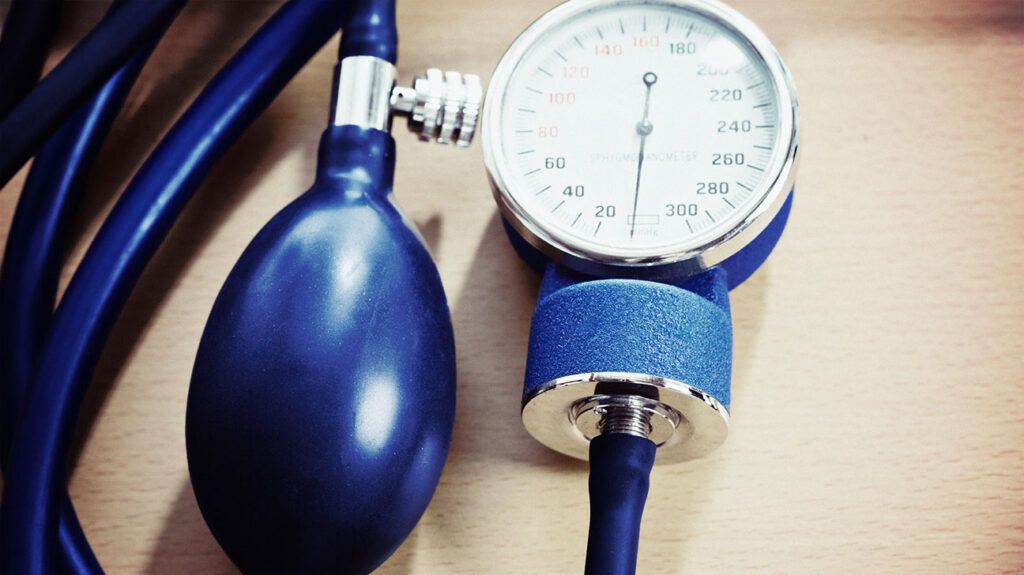Secondary hypertension is when a person has high blood pressure due to another condition, such as kidney disease. Treating the underlying condition may reverse it.
Genetic factors, diet, sedentary lifestyle, poor sleep, smoking, alcohol misuse, and obesity can cause primary hypertension.
Secondary hypertension stems directly from another condition, such as kidney disease. It is less common than primary hypertension.
This article looks at the features of secondary hypertension and how to recognize and treat it.

Secondary hypertension is high blood pressure that
A doctor
Factors that may contribute to secondary high blood pressure include:
- inflammation
- high volumes of fluid in the body, known as hypervolemia
- certain hormonal imbalances
- disturbances to the nervous system
Among people with hypertension, secondary hypertension accounts for:
- between 5% and 10% of all people with high blood pressure
- between
70% and 85% of those with hypertension under 12 years old - 30% of those 18 to 40 years old
17% of those 65 years old or older
The younger a person is, the more likely hypertension will be secondary.
Conditions that can lead to secondary hypertension
- kidney disease, which can also worsen when hypertension is present
- coarctation of the aorta, a narrowing of the aorta that is usually present from birth
- fibromuscular dysplasia, which tends to affect younger females
- conditions present from birth, such as Cushing’s syndrome
- thyroid and other hormone-related conditions
- sleep-disordered breathing, such as sleep apnea
- too much fluid in the body
- use of certain medications, including some chemotherapy drugs and birth control pills
- pregnancy
Hypertension itself does not usually produce symptoms. Usually, a person will only know they have high blood pressure by taking a reading.
Depending on the underlying cause of secondary hypertension, the person may have symptoms
- muscle weakness or cramps
- headache
- sweating
- arrhythmia (irregular heart rate)
- sudden pulmonary edema (fluid in the lungs)
- symptoms of sleep apnea, such as daytime sleepiness
- symptoms of thyroid disease, such as heart palpitations, diarrhea, and heat intolerance, among others
Anyone with or at risk of hypertension can benefit from monitoring their blood pressure regularly. Home monitoring devices can help the person do this. A doctor can advise on how often to measure blood pressure.
Doctors diagnose high blood pressure by measuring or monitoring blood pressure over time.
A doctor may suspect secondary rather than primary high blood pressure if a person:
- has a diagnosis of kidney disease, a heart defect, or other possible underlying cause
- has a sudden or severe increase in blood pressure
- is under 30 years of age
- has hypertension that does not respond to blood pressure medications
- has no family history of hypertension
- has high blood pressure without the usual factors, such as obesity
To check for possible causes of secondary hypertension, a doctor
- take a full medical history
- carry out a physical examination
- assess the person’s overall cardiac history
- order blood tests to measure hormone levels, kidney function, and so on
- analyze a urine sample
- do imaging tests
- perform an electrocardiogram (ECG, or EKG)
Treatment will vary depending on the secondary cause.
With all of the causes, healthy life choices and appropriate blood-pressure-controlling medications
Cardiovascular health resources
Visit our dedicated hub for more research-backed information and in-depth resources on cardiovascular health.
It is not always possible to prevent secondary hypertension — for instance, if it results from genetic factors or features a person is born with.
However, lifestyle choices can help reduce the risk of some underlying conditions, such as kidney disease and atherosclerosis. These include avoiding a high-sodium diet and not smoking.
The outlook for secondary hypertension will depend to some extent on the cause.
It can be reversible if treatment effectively addresses the underlying condition. Overall,
Without treatment, however, either the underlying condition or the cardiac effects can be life threatening.
Here are some questions people often ask about secondary hypertension.
What is the most common cause of secondary hypertension?
Kidney disease is the
What is the test for secondary hypertension?
In addition to measuring blood pressure, a doctor will likely recommend blood and urine tests, an electrocardiogram, and imaging tests.
Who should have a test for secondary hypertension?
A person may need a test if they have:
- hypertension that is not responding to treatment
- high blood pressure and are under 30 years of age
- blood pressure that increases suddenly
- symptoms that may indicate an underlying condition
Secondary hypertension is high blood pressure that results from an underlying condition, such as kidney disease. Like primary hypertension, it may have no symptoms but can be life threatening without treatment.
For anyone with secondary hypertension, it is essential to follow both the treatment plan for any underlying conditions and a doctor’s recommendations on monitoring and managing secondary hypertension.
